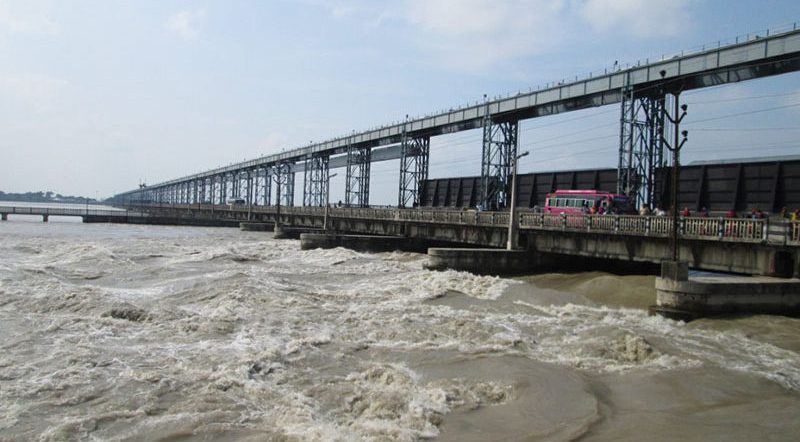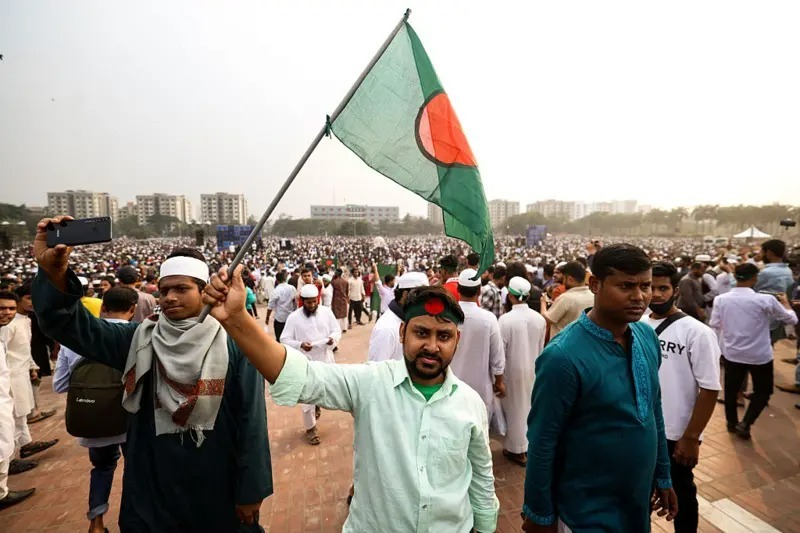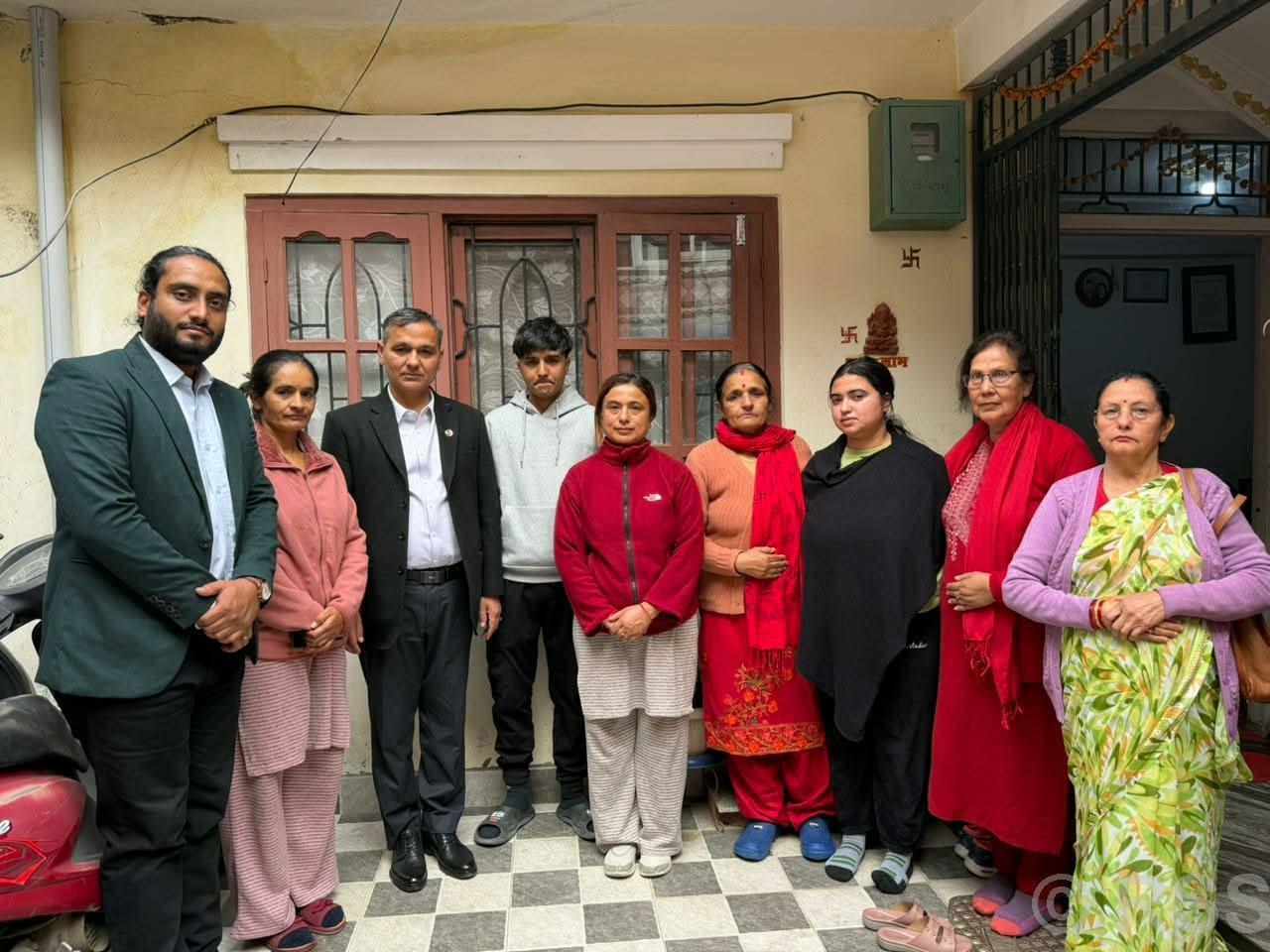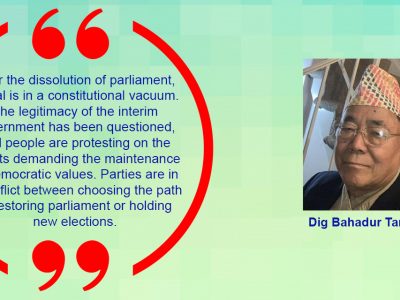Monsoon melancholy of sleep-stealing Koshi river

Monsoon in Nepal usually spans from the month of June to August. This is also the time when rain-triggered floods occur in various parts of the country. However, the trend of rainfall-trigged flooding at Koshi River is different, as it goes until September and sometimes up to October. The five months are unpredictable period for the residents living close to the Koshi river in Sunsari district. ”Koshi is a very unpredictable river. It can do anything at any time’, says Dharmendra Chaudhary of Rajabash of Barahakshetra Municipality-9, while sharing his fears during the monsoon months.
Likewise, Parsuram Mehta from Dholbajiya Tole of the same ward goes further to say, ”We cannot be certain of our security in times of rainy season. This is what we have learnt from Koshi’s past floods destroying agricultural fields and people’s houses.” Mehata said monsoon steals his sleep every night. ”In rainy days, I don’t tune into the radio in loud voices like before just to hear the possible roars of soaring Koshi currents”, said Mehta.
This is not an individual story of few local folks like Mehata living on the bank of Nepal’s largest river Koshi that originates in Tibet of China and flows through Nepal finally reaching as the tributary to the Ganges river of India. Thousands of people living on the either side of the Nepal’s biggest river share similar sentiments like Mehta.
The recent river bed erosion on July 19 has increased fears of locals. Nepali contractor Vijaya Kumar Mandal, who works for prevention of erosion towards human settlements, said his repair works continues until October 15.
Periodic Koshi floods
Given the volatile course and erosion trend of Koshi, fears of locals are not unfounded. Some researchers say Koshi river has shifted 115 kilometer west in the last 200 years. Likewise, the erosion rate of Koshi is also high. According to a journal article of Kathmandu University Journal of Science, Engineering and Technology published on August 2015, erosion rate of Koshi at Barahakshetra area is 169 ton/ha/yr.
Local journalist Krishna Bhattarai from Dharahara Tapan, Prakashpur of Baraahakshetraa Municipality-9, said these technical details of Koshi is known by all locals giving them huge fears in times of monsoon.
”People do not know the exact technical pattern of erosion and the shifting of Koshi”, said Bhattarai, ”However, they know how Koshi’s mainstream currents gets shifted in the last five decades.” Bhattarai said Koshi fears, now, are not limited during monsoon.
”On 24 August 2008 it was not the peak of the monsoon when Koshi flood destroyed thousands of homes and farmlands”, said Bhattarai, ”This has shifted locals’ fears from monsoon-only to all weather fears.”
The nature of Koshi floods of 2008 has taken not only the locals by surprise, but also some experts. Dr. Santosh Kumar, the former professor of Water Resources at N.I.T, Patna has expressed the same. Dr. Kumar has been surprised to see the breach of the flood located at 11.9 kilometer upward from the 1150-meter-long Koshi Barrage creating the embankment breach of 1745 meters.
”Koshi Barrage has been designed for peak flood of 954,000 cusecs”, said Dr. Kumar after his observation of the flood, ”On August 18 this year when the embankment was breached, the discharge was only 148,322 cusecs.”
Some experts even went to term the 2008 flood of Paschimkusaha as the manufactured calamity. People call Koshi ”the sorrow of Bihar in India’. However, for thousands of Nepalis people living on the banks of Koshi, especially in three districts of Sunsari, Saptari and Udayapur, Koshi has been a constant sorrow.
This sorrow begins from the Koshi Agreement inked between Nepal and India on 25 April 1954 and the subsequent accomplishment of 1150-meter-long and 10-meter-wide Koshi Barrage in 1962
. On 10 June 1965, there was breach on Sindhure Tapu embankment and Koshi entered into the human settlements. The other troubling Koshi floods and erosions occurred in 1968, 1971, 1978, 1980, 1982, 1984,1987, 1991 inundating and destroying human settlements and fertile farmlands.
Flood survivors still await compensation
According to Baburam Karki, the Secretary of Koshi Inundation Erosion Flood Victim Struggle Committee, intermittently Koshi has displaced thousands and they are not compensated.
”Our three bigaha of land was swept away by Koshi during the 1982 floods and now Koshi flows over it”, said Karki, ”There are hundreds here like me.” Karki said victims other than 2008 floods are not compensated despite their regular revenue payment to the Land Revenue Office of Nepal Government.
Koshi occupies the land owned in paper by Padam Bahadur Karki, Manmaya Karki from erstwhile Prakashpur Village Development Committee, which now lies in Barahakshetra Municipality-9 of Sunsari.
Joney Limbu, who chairs Koshi Inundation Erosion Flood Victim Struggle Committee, lost 12 bigaha of land to Koshi flood of 1982. Limbu said around 40,000 bigaha of land are destroyed by Koshi floods in different time at Prakashpur, Mahendranagar and Chatara area of the municipality only.
Santosh Limbu, Nepal’s representative for Liaison Land Cum Land Acquisition Office, Biratnagar which oversees Koshi Project activities also agrees on long-pending pleas of Koshi victims like Baburam Karki and Joney Limbu.
Limbu said Koshi Project officially has only acquired 13,337 bigaha of land from individuals but Koshi has inundated around 60,000 bigaha of Nepali land in the project area. Limbu said Koshi Agreement clearly spells out compensation for inundated farmlands. According to Limbu, in 2012, Nepal and India jointly made verification study about inundated lands of Udayapur and Saptari area and 7,663 bigaha was verified.
”There was provision to compensate people with 105,000 rupees per bigaha of land for 7,663 bigaha of land owned by around 10,000 people”, said Limbu, ”However, this is not materialized so far.” Limbu said both verification of other inundated areas and the compensation to the verified lands based on 2012 joint verification study by India and Nepal, are pending mainly owing to unwillingness on part of the Indian side. RSS
Facebook Comment
latest Video
Trending News
- This Week
- This Month

















